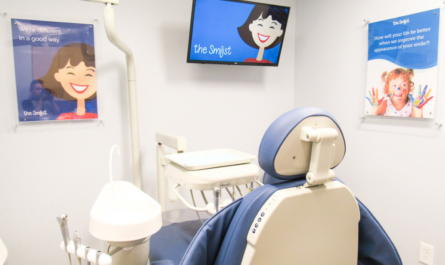Written by: Stuart J. Oberman
A checklist to work through when considering an acquisition
You’ve made the decision to grow via acquisition, and identified a practice you’d like to acquire. What’s next? Due diligence. And plenty of it.
Acquisitions are best initiated via a doctor-to-doctor conversation, says Stuart Oberman, Esq., Loganville, Ga. But following that, the acquiring doctor would be well-advised to hand off the financial analysis to his or her CPA or attorney.
“You have to have the right people in place to obtain that successful practice,” he says. “That means a CPA, attorney and, many times, a broker.” Together, they should consider each of the following – what Oberman refers to as the “due diligence checklist.”
Check
First: Check the financials, and check them early. Look at the tax returns, production runs for the past three years, profit-and-loss statements, accounts receivable, malpractice issues. Are revenues on an upward or downward slope? Is the practice growing, standing still, or slipping? “We have clients who don’t obtain all of the financial information about a practice until two or three weeks before closing,” he says.
Who’s responsible for the majority of the practice’s revenue? If you’re considering buying a practice in which the owner is pulling, say, 30 percent of the load, and the associate 70 percent, you could be in trouble, says Oberman. “If the practice is sold, and the associate feels as though his or her employment with the new owner may be short-lived, the associate will definitely look for other opportunities elsewhere,” he says.
Second: Gauge the quality of care in the practice you wish to acquire. Review charts and treatment plans. Are endo procedures going out the door? Are procedures being done incorrectly? How many patient complaints are on record? How many dental board complaints have been filed against the seller? “Once you’ve reviewed the charts, you find out what your exposure may be,” says Oberman.
Third: Have the seller invest in tail coverage, that is, insurance to cover work done by the seller prior to the sale.
Fourth: What percentage of the practice’s revenue comes from fee-for-service? Managed care agreements, such as HMOs or PPOs? Medicaid? A practice reliant on Medicaid probably won’t garner as high a price as one that relies on fee-for-service.
Fifth: What is the seller’s record with third-party payers? “Many times, when you perform your due diligence correctly, you find the practice has been audited by insurance companies or Medicaid,” says Oberman. It’s important to know these things prior to the acquisition.
Sixth: Check the status of the associates in the practice you want to buy. If an associate has been with a practice a number of years, but is not under a tight employment agreement, many patients may follow the associate out the door following the sale, says Oberman.
“If, during the buyer’s due diligence period, the buyer discovers that the associate is not under an employment agreement with the seller, the buyer should insist on the associate signing an employment agreement with the seller prior to the sale, which is in turn assignable to the buyer from the seller. This is especially true if the associate has been employed at the practice for any length of time.”
Every employment agreement with an associate dentist [regardless if that associate is in an existing single-location practice, or in a multipractice a buyer wishes to acquire] should contain the specific terms of the associate’s employment with the practice, which includes a non-solicitation clause, to prevent the associate dentist from soliciting the patients of the practice if the associate leaves; and a non-compete clause.
Seventh: Is the seller subleasing space to specialists? “We’re seeing an uptick of multipractice owners bringing in specialists several days a month, for endo, pedo, etc.,” says Oberman. “If agreements with these specialists aren’t disclosed, that could create a problem.” Depending on how the agreements are structured, it’s possible the buyer may be bound by the terms of the agreements.
Eighth: How does the practice targeted for acquisition advertise its services? “The question used to be, ‘What are your Yellow Pages ads?’” says Oberman. Today, it’s not that simple. “You’re in the area of intellectual property.” Can the buyer negotiate the use of the seller’s practice name – an intellectual property issue – for one or two years, depending on how long the prior owner remains on staff following the sale? How about domain names? Some practices have eight, 10 or even 12 domain names. Are they part of the agreement? If not, the seller can potentially divert traffic to those domain names to another practice he or she is starting or acquiring.
Ninth: What is the seller’s standing in the community? What is his or her reputation? “With the advent of the Internet, that’s not hard to find out,” says Oberman.
Tenth: Who are the key referral sources for the practice to be acquired? Are there multiple sources, or just one? To whom does their loyalty lie – with the owner of the practice, or the associate? Can the potential buyer retain those referral sources after the acquisition?
Eleventh: Take a good, hard look at the staff of the practice to be acquired. How long have the hygienists, assistants or office manager been on staff? When was the last time they received a raise? Have they hinted they would leave the practice in the event of a sale? Many times, staff who have been in a practice 15 or 20 years are probably receiving above-market salaries. That could pose a dilemma to the new owner, who, no doubt, wants to trim costs.
Twelfth: Are there outstanding liens or judgments on the practice or practice owner individually? “You’d be amazed” at the number of tax liens, UCC-1 issues and judgments that are discovered prior to a sale, all of which should be discovered during the due diligence phase, says Oberman. In one instance, the lender missed – two days before closing – a missed tax lien, a lawsuit and four UCC-1s, totaling $400,000 (which Oberman’s firm discovered by doing its due diligence).
Thirteenth: Is the seller’s practice digital or paper-based? If digital, can software licenses be transferred to the buyer? Depending on what practice management software is in use, the seller may have to purchase new software, says Oberman. In addition, the buyer needs to check the seller’s practice for compliance regarding HIPAA and OSHA regulations. It’s not hard to do, says Oberman. Just look at their manuals.
“Buying a practice can be very profitable,” says Oberman. “But the homework has to be done upfront.” Get your team in place early – lawyer, accountant, broker. You’ll need their help.
Editor’s note: Stuart J. Oberman, Esq. handles a wide range of legal issues for the dental profession including employment law, practice sales, OSHA and HIPAA compliance, real estate transactions, lease agreements, non-compete agreements, dental board complaints and professional corporations. For questions or comments regarding this article, call (770) 554-1400 or visit www.obermanlaw.com.
Sidebar:
Know when to hand-off
An acquiring doctor would be well-advised to hand off the financial analysis to his or her CPA or attorney
Know the associate
Check the status of the associates in the practice you want to buy. If an associate has been with a practice a number of years, but is not under a tight employment agreement, many patients may follow the associate out the door following the sale, says Oberman.
Know the staff
How long have the hygienists, assistants or office manager been on staff? When was the last time they received a raise? Have they hinted they would leave the practice in the event of a sale?





